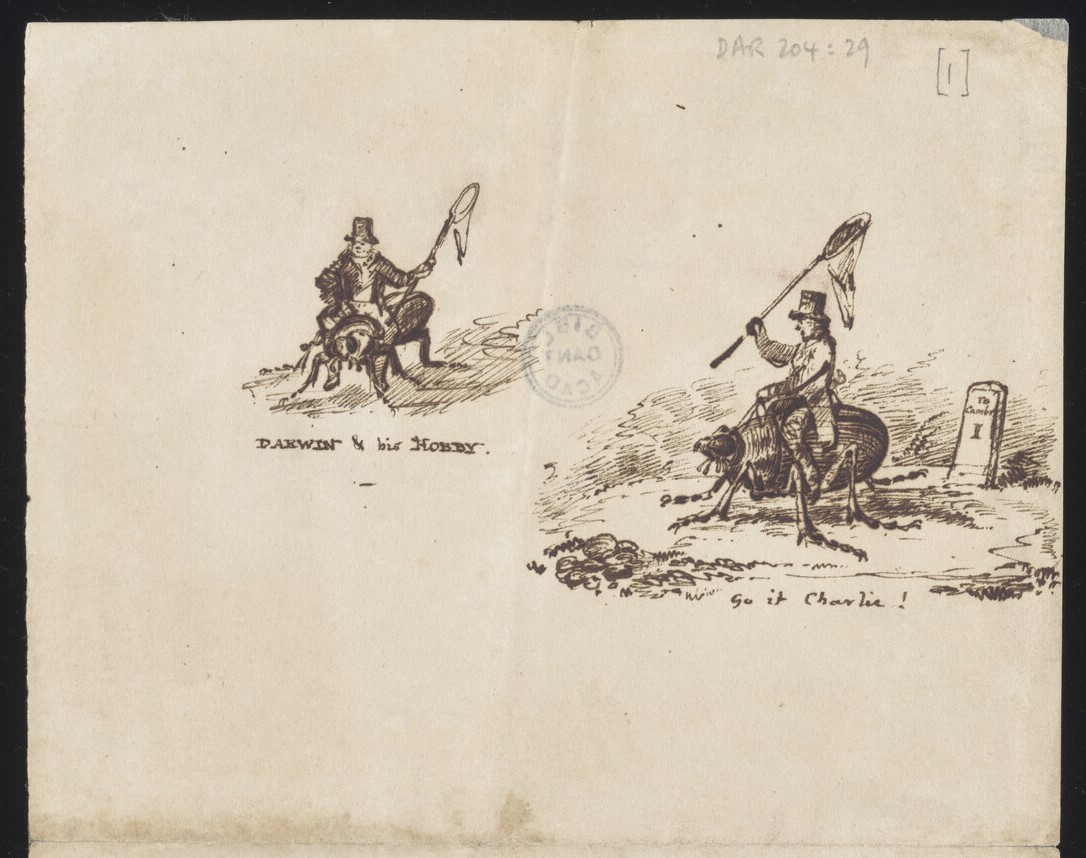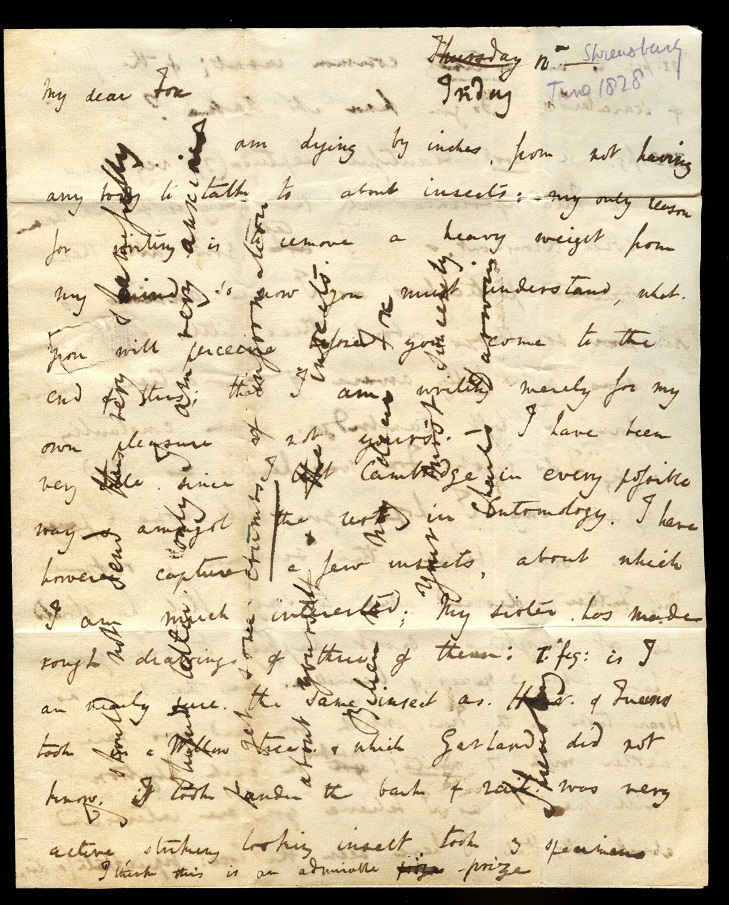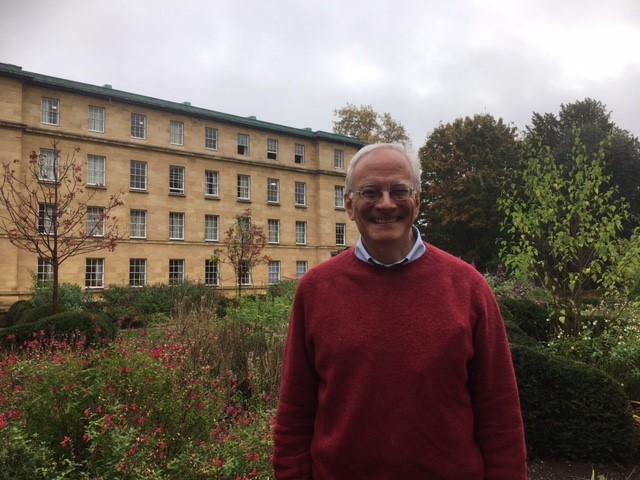
In a drawing from Cambridge University Library captioned ‘Go it Charlie!’ alumnus Charles Darwin is shown, age about 18, riding a beetle with a net in his hand. Darwin’s passion for entomology - the study of insects - began while he was a student at Christ’s and continued all his life.
Professor Jim Secord, Christ’s Fellow-Commoner and Director of the Darwin Correspondence Project, says that Darwin’s career at Christ’s was ‘in many ways the most magical time of his life’.
When Darwin was an undergraduate the tripos was traditional - maths, classics, theology - but what Darwin really loved was science. It was ‘a really important moment’ at Cambridge says Secord as new subjects were introduced. In the picture above Darwin is essentially shown ‘riding his hobby’:
“It’s part of a tradition in the early nineteenth century of people becoming or closely embodied as the thing that they do. Darwin isn’t shown as an insect, but his hobby has become an insect itself. He rides it just like he does his horse. It’s quite wonderful to see that.”
Darwin was inspired by teachers such as geologist Adam Sedgwick and botanist John Stevens Henslow and involved with the Cambridge Philosophical Society. Later he was invited by Henslow to join the survey voyage of HMS Beagle which began in December 1831 during which he developed ideas that later became relevant to his evolutionary theories.
The Correspondence Project records letters to and from the naturalist written between 1821 and Darwin’s death in 1882. Secord says, “It’s not just an edition of Darwin’s correspondence, it’s an edition of 2000 other people’s letters as well.”
This includes friends and family - the Christ’s archive contains many letters written by Darwin to his good friend and second cousin William Darwin Fox, another Christ’s alumnus. Secord says these are among “the most revealing’ biographical letters. Darwin wrote in June 1828: “My dear Fox, I am dying by inches, from not having any body to talk to about insects …”

Darwin’s prominence increased with the publication of On the origin of species in 1859 which outlined his theory of evolution through natural selection.
Members of the public also wrote and shared information with him. Probably inspired by Darwin’s discussion of the ‘love-antics and dances’ of birds, in the 1870s Caroline Shuttleworth of Totteridge described her observations of a fantail pigeon courting a discarded ginger-beer bottle.
She wrote:
“Immediately the father of the fantail family flew down in a state of intense excitement, & to my great amusement began to perform the most extraordinary genuflexions, evidently in homage to the bottle.
He walked solemnly round & round it, cooing continually, & trailing his wing, & bobbing his head up & down, with the most exaggerated antics I ever beheld on the part of an enamoured pigeon. This went on for hours, but he never went quite up to it, & it never ceased until the bottle had been removed.”
The Correspondence Project, founded in 1974, ends in December with completion of a final volume (number 30) of the print edition of the correspondence and online publication of all known letters - over 15000 - to date. Professor Secord says “we have had such a fantastic team with quite extraordinary skills.”

A special exhibition at Cambridge University Library - Darwin in Conversation: The endlessly curious life and letters of Charles Darwin - is on at the University Library until 4 December 2022.
Explore the Darwin Correspondence Project.

